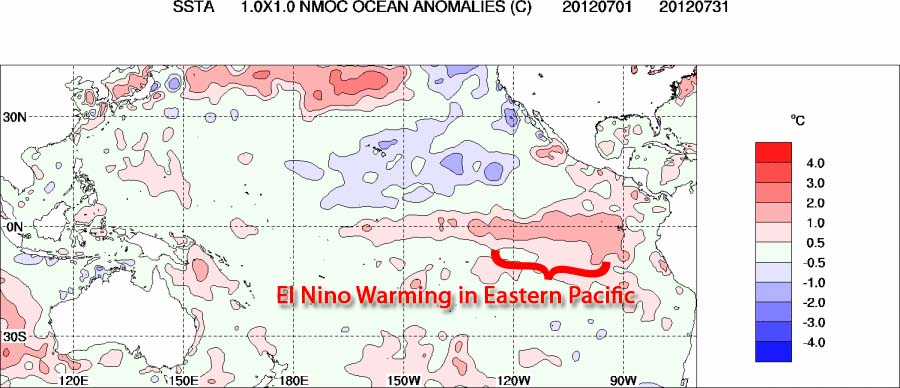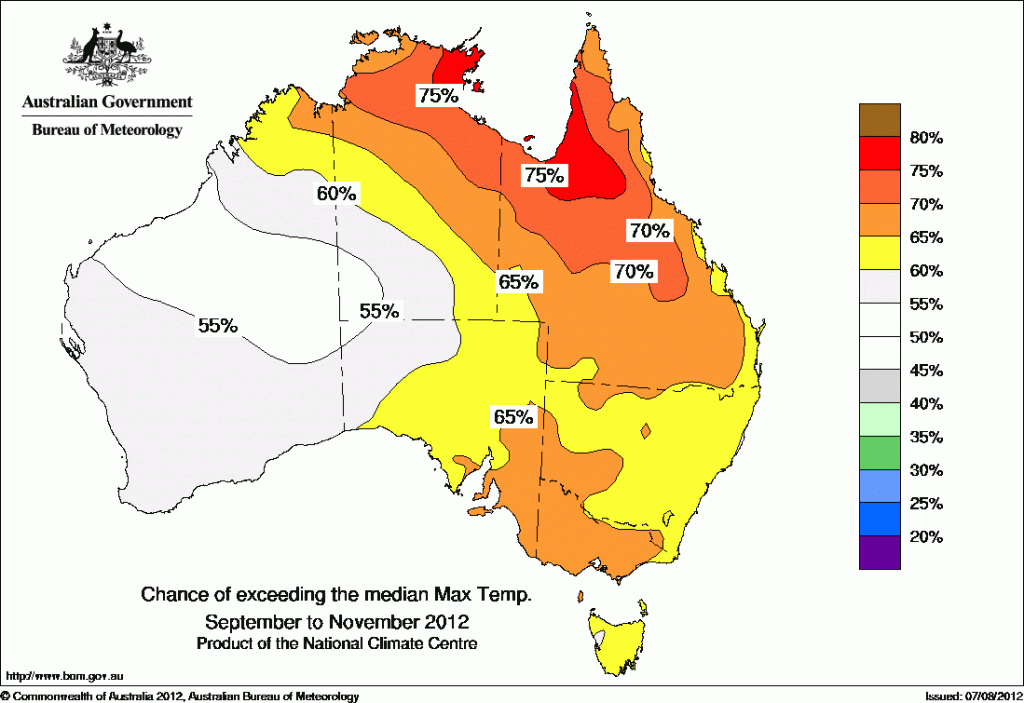Groundhog vs Climate Models – a close run thing.
The Australian, government’s models predict warm and sunny months ahead. Let’s hope they’re right. But, my money is waiting on seeing how the Groundhog feels about all this… Should we believe the Climate Models that have been wrong for a decade predicting a non-existent, Global Warming?
The Bureau of Meteorology (BOM) are the official, governmental source of weather data in Australia. They are oft-cited and relied upon by business. Weather prediction, especially long-term such as more than a few days ahead, is a complex and let’s face it a precarious practice. Perhaps the judicious use of a specially trained Groundhog would be just as good many a time? According to folklore, if it is cloudy when a groundhog emerges from its burrow on Groundhog Day, then spring will come early. Excellent, let nature predict nature. Day-to-day, I work with predictive models that use weather forecasts. We have, through experience, learnt that even our current, best efforts are haphazard at best. See the story of the devastating, Brisbane floods in 2011 for the travesty of governmental policy relying too heavily on tenuous weather predictions. BOM, the principal, policy advisors to the Queensland government, created forecasts that had a controversial assumption of Global Warming. This skewed their results dramatically. They thus predicted hot and dry; we got cool and wet – very wet. Weather predictions are worth noting, they are not totally redundant. But, perhaps, they should currently be taken with a pinch of salt.
With that said, we can look at the major drivers of weather and for, say the next year, take a stab at whether spring will be early this year after all. Give the Groundhog a day off. To do this, you can look no further than the obvious drivers – the “Sun and Sea” hypothesis. In a nutshell, one can monitor the sun’s solar flares and the warmth of the seas that both drive cloud formation and thus one can determine temperature.
So what are the “Sun and Sea” telling us Australian, surf lovers about the weather for this year?
Last summer …
We had very low sunspot numbers, a Pacific Decadal Oscillation (PDO) in its cool phase and a strong La Niña (i.e. cool, tropical, Pacific waters). This lead to a cooler, wetter summer than normal (as predicted by some).
This year …
a) The sunspot frequency is still relatively low, but on the rise with Solar Cycle 24 hitting a relatively, conservative maximum in perhaps May 2013. Allegedly, Solar Rays deflect background Cosmic Rays. The latter are cloud seeding nuclei and aid cloud formation. Thus, having a low sunspot activity leads to more cloud seeding nuclei and more clouds. Daytime clouds drop temperature. Well, that’s how the theory goes anyway.
Current sunspot activity
b) The tropics of the Pacific are showing a return from previous La Niña conditions to warmer El Niño conditions. The process goes as follows. During, an El Niño event surface temperatures are warm in the east Pacific Ocean. This halts the easterly trade winds. Pressure thus increases over Australia and less oceanic moisture is delivered there. This reduces cloud cover and thus rainfall, but can increase daytime temperatures.
Current El Niño formation in the Pacific Ocean
c) As for the long-term, 20 year cycle, Pacific Decadal Oscillation, it is still in an early stage of a PDO, Cool Phase.
So, can this qualitative information on climate drivers give us a quantitative prediction of weather?
Australian summer 2012 weather prediction
Opinion (a): “Sun and Sea” hypothesis – my prediction:
- We have cool PDO, Pacific waters, but this will be cancelled out by
- Warm El Niño, tropical, Pacific waters
- Sunspot numbers are still relatively low as we rise up to Cycle 24’s relatively low maximum and thus cloud formation will remain relatively high
I predict: Warmer and drier than last summer (2011), but 2012 will be still slightly cooler and wetter than long-term (100 year) averages
The major unknown is the El Niño. Will it go full blown and bring in warm and dry Pacific weather fronts. If so, we could have warmer and drier days ahead than my guesstimate.
Opinion (b): “Sea and Global Warming” hypothesis – BOM prediction:
- The Pacific Ocean is currently near the threshold for El Niño conditions
- Climate models forecast the Pacific to either exceed or remain just below El Niño thresholds during spring 2012. No models suggest a return to La Niña.
Spring 2012 Temperature Prediction (warm expected)
Spring 2012 Rain Prediction (dry expected)
BOM predicts: Regardless of whether an El Niño event develops, Australian climate drivers for spring (and summer) 2012 favour drier and warmer than average conditions.
N.B. this is the official, BOM forecast for spring, but as the climate drivers are long-term, they indicative for a summer forecast as well (edit: will update if not the case).
El Niño is the main driver for warmer, drier conditions in Australia. The fact that the BOM prediction precludes a strong El Niño event means they are making a pretty bold prediction in the face of the other climate drivers. It should be cooler and wetter summer, in my opinion, due to the drivers of low sunspot activity and cool PDO. I agree a very strong El Niño will warm Australia up, but they predict warm even without it!
Conclusion
Whilst I don’t have the sophisticated climate models than our government (BOM) has and the ability to produce a quantitative prediction of Australia’s coming summer weather, we can compare our predictions on a qualitative basis. I agree they have a much wider and thus better range of input parameters (e.g. they include the Indian Ocean Dipole) compared to my back-of-a-handkerchief analysis. However, I have one huge fundamental and purposeful omission. I don’t believe there is a predominant, underlying driver of climate change; namely, CO2-based, Global Warming. Ubiquitously, models are super-sensitive to the slightest changes in their input assumptions and Global Warming is a dominant assumption for BOM. One that I am skeptical about. BOM and I agree on the influence of the “sea”, but we differ in that I believe the sea’s companion-in-crime is the “sun”, whereas they plumb for CO2-based, “Global Warming”.
I predict, and admittedly wouldn’t even give my own 2 cents worth for it, a slightly warmer summer than last year (2011), but still cooler than normal. Whereas, BOM predicts a warmer and drier spring, and thus summer, than normal. Only time will tell. Moreover, what does it really matter? No one remembers a bad prediction anyway – so predict away…






